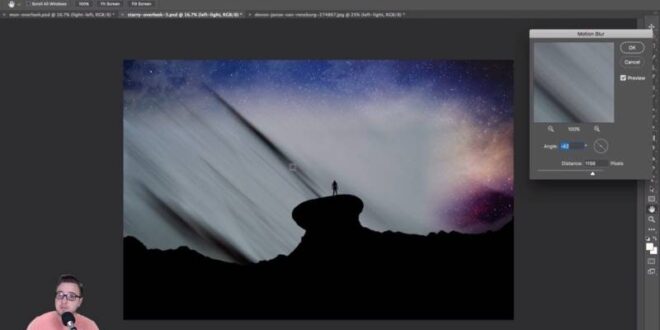How To Use The Transform Tool In Photoshop For Image Adjustments – 80% discount for all courses today the biggest sale of the year 80% discount for all courses today the biggest sale of the year 80% discount for all courses today the biggest sale of the year 80% discount for all courses today the biggest sale of the year 80% discount for all courses Today’s biggest sale of the year 80% discount on all courses Today’s biggest sale of the year 80% discount on all courses Today’s biggest sale of the year 80% discount on all courses Today’s biggest sale of the year 80% discount on all courses Today’s biggest sale of the year 80% discount on all courses today, the biggest sale of the year
Transform in Photoshop is a powerful feature that allows users to transform images or objects within the program to suit their creative needs. This basic tool lets you resize, reshape, rotate, and move elements in a document, making it an invaluable skill for any Photoshop user. With a wide range of options, anyone new to Photoshop or looking to expand their skills can learn how to effectively use the Transform feature to enhance their projects.
How To Use The Transform Tool In Photoshop For Image Adjustments
The Transform tool consists of two main functions: standard transform and free transform. Standard Transform allows users to make basic adjustments such as scaling, rotation, and tilting, while Free Transform allows for more fluid manipulation of the object, such as bending, warping, or applying perspective changes. These features, along with the ability to adjust layers, paths, and masks, open up endless creative possibilities when editing your photos in Photoshop.
Tutorial: Photoshop’s Undo, Steps, And Increasing History States.
In Photoshop, the Transform feature allows us to manipulate layers in various ways such as resizing, rotating and flipping. There are two main functions in the conversion tool: the standard conversion and the free conversion function. Using these tools, we can edit elements both subtly and heavily.
To access the transform tools, first select the object or layer you want to transform. Then go to Edit > Free Transform or use [keyboard shortcut](https://helpx.adobe.com/photoshop/using/free-transformations-images-shapes-paths.html)
To maintain the height-to-height ratio of the object during the transformation, hold down the Shift key and drag the handles. This is especially useful when resizing images or smart objects to preserve their quality.
Another feature of the transform tool is the ability to move the reference point (https://www.bwillcreative.com/how-to-use-the-transform-tool-in-photoshop/). A reference point defines an anchor around which objects are transformed, such as rotation or scale. By default, it is in the center of the object, but it can be moved to any position according to your needs.
Photoshop- How To Resize An Individual Layer Or Object
As a result, Photoshop’s transformation tools provide us with a versatile set of options for manipulating layers and objects. By learning to master these tools, we can easily create complex and professional designs.
In Photoshop, the Free Transform command allows us to easily manipulate our images and layers through various transformations. This includes actions such as scaling, rotating, rotating and warping. The Free Transform command is easily accessed by clicking “Edit” in the menu bar and then selecting “Free Transform” or by pressing the keyboard shortcut “Ctrl+T” (or “CMD+T” on a Mac). .
When using Free Transform, it’s important to first select the desired layer in the Layers panel. Remember to hold the Shift key during the conversion process to preserve the aspect ratio while scaling or resizing the image.
By rotating the image, we can manipulate its viewing angle. To manually rotate the layer, press and drag outside the bounding box, or enter the exact angle in the options bar at the top.
Photoshop Toolbar Missing
. Using the Free Transform command, we can also quickly flip our layer horizontally or vertically by right-clicking inside the bounding box and selecting “Flip Horizontal” or “Flip Vertical.”
If we want to distort the layer, click and drag from any corner while holding the Ctrl (or CMD) and Shift keys to activate the distortion. Additionally, the Free Transform command allows us to apply a more complex Warp to our layer by right-clicking inside the bounding box and selecting “Warp.”
All in all, the Free Transform command in Photoshop is a valuable tool for our image editing needs. It gives us a wide range of options to manipulate our layers, making it a versatile and powerful tool in our design process.
In Photoshop, advanced transformation techniques allow us to manipulate images with greater precision and control. They are essential for creating realistic compositions, adjusting perspective, and adjusting the overall appearance of the image.
Using The Vanishing Point Filter In Adobe Photoshop Cc
Warp is a powerful tool that allows you to transform an image by freely dragging its control points. Useful for making subtle adjustments to the shape of objects within an image. For example, you can use Warp to bend a flat road into a curve or place a flat object on a curved surface.
Skew changes the structure of the image by tilting or tilting it along the X or Y axis. This technique is commonly used to adjust the angle of the shot to match the perspective of the environment. In this Adobe Photoshop tutorial, you can learn more about beveling.
Changing the perspective simulates a 3D view by adjusting the vanishing points of the image. Especially useful for architectural photography and graphic design when aligning objects in a scene. You can find more information about the view in this YouTube video.
The Liquify filter is another advanced transformation tool that lets you squeeze, drag, scale, and shrink pixels in an image. We often use this filter to retouch images, such as shaping facial features and smoothing wrinkles in clothes.
How To Transform Objects In Illustrator
When you use any of the above techniques, a transform box appears around the object, allowing you to scale, rotate, and move it without directly changing its pixels. This allows you to experiment with different changes while maintaining image quality.
Finally, it should be noted that many of these techniques can be used non-destructively. This means you can change your image without permanently affecting the original content. Using adjustment layers, smart objects, and layer masks helps maintain flexibility during the editing process.
In Photoshop, settings play a key role in how the software works and how different tools work, including the Transform tool. To access the Preferences dialog, go to Edit (Win) / Photoshop (Mac) > Preferences > General. Here you’ll find a number of options to customize Photoshop’s behavior to your liking.
One of the key settings related to the Transform tool is the Legacy Free Transform option. Checking this box reverts to the old conversion behavior before CC 2019. This can be useful if you are more familiar and comfortable with the older way of working with transformations.
How To Stretch An Image In Photoshop Easily
As for the conversion options, they offer a wide range of possibilities for manipulating images, shapes and paths. Some of these options include scaling, rotating, tilting, and warping. We can apply these transformations to a selection, an entire layer, multiple layers, or even layer masks.
To get the best results, it is essential to know how these settings and settings affect our work in Photoshop. Taking the time to adjust your preferences based on your needs and workflow not only makes Transform more intuitive, but also improves our overall experience with the software.
When working with Photoshop’s conversion tools, it’s important to follow the tips and guides for the best results. First, when manipulating vector shapes or shape layers, it is important to maintain their quality and clarity by choosing the appropriate interpolation method. You can do this by going to
Use the move tool or arrow keys on your keyboard for precision to move the object effectively. Don’t forget to enable it
How To Adjust & Change Facial Features In Photoshop
If you need precise alignment of features for more flexibility, use the Free Transform function, which allows you to manipulate objects in a variety of ways, such as rotating, resizing, and bending.
Finally, always keep an eye on the options bar to access certain functions, such as the preserve aspect ratio or rotation angle button. Use these Photoshop conversion tool tips and tutorials to improve your editing skills and get the results you want.
The Free Transform tool in Photoshop allows us to change the size, position, rotation and tilt of an object or image. To access it, select an object or layer and press Ctrl+T (Windows) or Command+T (Mac). Once activated, you can click and drag the corner handles to manipulate the item as desired.
Photoshop offers a variety of transformation options, including scaling, rotating, tilting, warping, and warping. You can apply these transformations to selections, layers, layer masks, etc. For example, you can use the Free Transform command to apply basic transformations or the Warp mode for more advanced shape manipulation.
High Resolution Images Size: Optimal Size And Quality Guidelines
To effectively use the perspective transform, select the object or layer you want to transform and activate the Free Transform tool. Press and hold Ctrl+Alt+Shift (Windows) or Command+Option+Shift (Mac) while dragging a corner handle. This will stretch or compress the image to create the desired perspective effect.
To skew an image in Photoshop, start by selecting the object or layer you want to skew. Activate the Free Transform Tool (Ctrl+T or Command+T) and hold Ctrl (Windows) or Command (Mac) while dragging the side handle. This creates a swing effect by moving the selected side handle while holding the opposite one
 Alveo Creative Blog Guiding users through techniques for enhancing images, retouching portraits, and mastering popular editing software
Alveo Creative Blog Guiding users through techniques for enhancing images, retouching portraits, and mastering popular editing software




